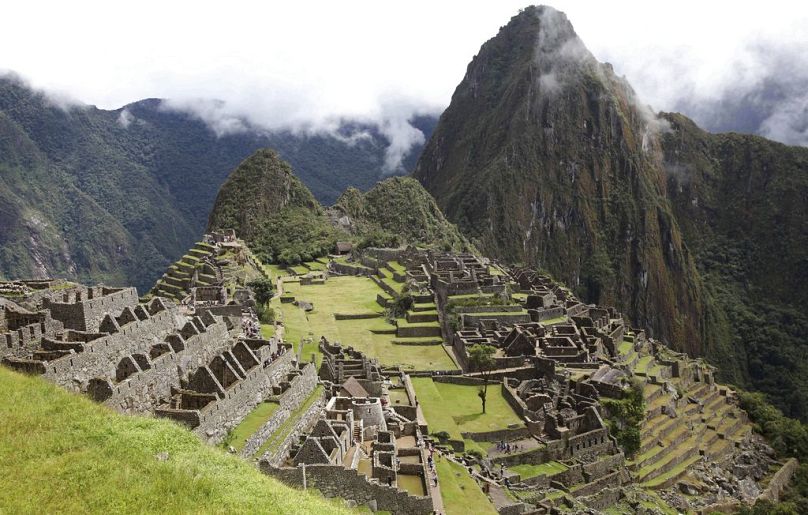Jesse Katayama was treated to an exclusive private tour of the ruins in reward for having to wait so long in Peru to see the Inca citadel.
Jesse Katayama has been stranded in Peru since the country implemented strict travel restrictions because of the coronavirus pandemic, barring him from leaving.
But in reward for his long wait, the 26-year-old Japanese tourist has become the first person in seven months to be allowed to enter Machu Picchu.
The resident of Osaka who normally works as a boxing teacher had purchased his ticket to enter the park on March 15th only to have it close the next day.
"This is totally amazing. Thank you Minister of Culture Alejandro Neyra for letting me see Machu Picchu," said Katayama.
"Jesse decided to stay in Machu Picchu until it opened its doors," said Jose Bastante, the Parks Director.
He spent his time teaching boxing classes to local children in Aguas Calientes, the gateway to the Inca citadel of Machu Picchu, which in contrast to its usual bustle, now looks like a ghost town.
“It has been a good experience for me, I have friends that I have met here, now I know a lot about this place,” he said.
Peru's government rewarded his thwarted effort by giving him an exclusive private tour of the ruins as a way to highlight the country being awarded the Safe Travel seals by the World Travel and Tourism Council in London.
The seal designates Peru to be a safe tourist destination that meets international hygiene standards and biosecurity against COVID-19.
"Peru is one of the first countries that implemented the eight protocols in the tourist sectors and today we are receiving the seal which is very important for the country," said Walter Martos Ruíz, President of Peru Council of Ministers.
This is a step to reactivate all of the tourist activities which is one of the areas which has been very, very heavily affected by the pandemic"
There is no date yet for the reopening of Machu Picchu, which received 1.5 million tourists a year, and which is the largest Peruvian attraction for international tourism.
As for the rest of the country, a total of 17 archeological sites and museums have opened their doors to visitors and another nine sites will do so progressively until the end of the month, and six more are expected to open gradually between November and January.
Peru's Culture Minister Alejandro Neyra, speaking in the Pachacamac archaeological site in Lima, said that visitors can make sure authorities are taking precautions.
"What is important for us is that there is complete security so you can attend with the protocols we are taking, allowing only a 50% capacity," said Alejandro Neyra, Peru's Culture Minister.
Among the archaeological sites that opened are Ollantaytambo, Chichero, both in Cusco, Chan Chan in the north, some of the best known for national and international tourism, while the Nazca lines will be available to visitors from November 12.












